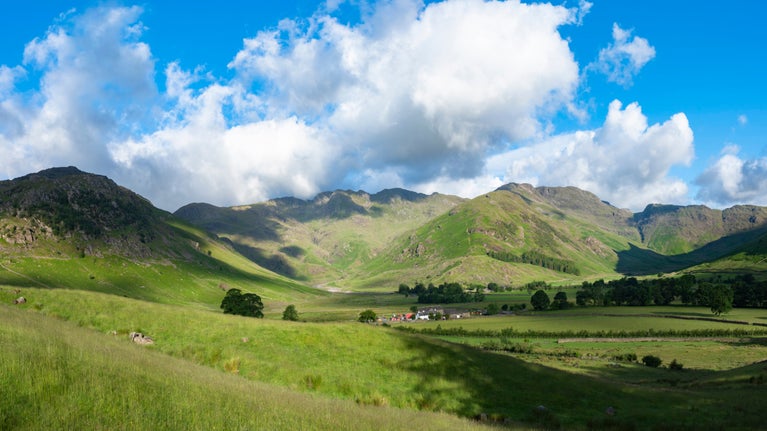
Nature conservation
From ancient trees to bees and butterflies, our places are full of life. We're working hard to safeguard nature for years to come.


Many native animal and plant species are struggling and we believe the way we garden can really help. What we choose to plant, how we look after the soil and water, what we leave undisturbed and when we do certain tasks can make a big difference to nature. All our gardens are managed with respect for wildlife but here are five gardens where nature is at the heart of what we do.
This charming, organically-managed garden contains diverse habitats including long grass, woods, still and running water, orchards and a long season of pollinator-friendly flowers. In the Sunken Garden a lily pond supports all three UK species of newt: smooth, palmate and great crested.
The Walled Garden has recorded sightings of over 50 species of bees and wasps. The rich insect life draws in many birds including wood warblers, redstarts, treecreepers, nuthatches, spotted flycatchers, buzzards and the occasional hobby. The garden is also home to red squirrels, hedgehogs, otters and badgers.
The garden at Buckland Abbey includes orchards, a wildlife pond and several meadow areas with wild flowers, orchids and spring bulbs. The whole garden is teeming with life and everything the team plant in the borders is selected to be good for pollinating insects.
Bird feeders are put up in winter, attracting many different species. Meanwhile bats and owls are often seen flying around the Great Barn in the evening.

This large woodland garden contains a mosaic of habitats including wildflower-rich meadows and a stream which supports little brown trout. There are also a dozen ponds teeming with damselflies, dragonflies, water-scorpions, frogs, newts and toads.
Acres of mature woodland have been planted with a high proportion of native species and deadwood is left to help wildlife thrive. Creatures found in the woods include nine different species of bats, woodpeckers, treecreepers and owls. Activities for visitors are often based around learning about nature. They include guided summer walks where it's possible to hear baby bats squeaking inside trees.
This 8-acre garden has been sensitively managed over many decades and is now home to a wide variety of species. This includes grass snakes, bats, tawny owls, woodpeckers, kingfishers and nuthatches. Blue tits have been known to nest in the garden wall and wrens often nest in the old compost heap. In winter migrating redwings stop and feed on fallen apples in the orchard.
The garden team love to spot butterflies and moths in the garden. The butterfly species recorded include peacock, painted lady, comma, gatekeeper, meadow brown and brimstone. The moths spotted include hummingbird hawk moth and mint moth.

The garden at Nunnington Hall has been managed for wildlife for over 17 years. The main garden in front of the house is converted into a meadow planted with fruit trees. The borders contain a mix of native and garden plants and there are bird boxes and insect habitats in all the nooks and crannies.
The vegetable garden is managed using no-dig principles and fed with compost from the fabulous composting system on display to visitors. A wide variety of birds can be seen using the garden year-round. There are bug-hunting events to join and otters can sometimes be spotted in the river.
Many other gardens in the care of the National Trust are very old and have areas that have been relatively undisturbed for decades or even centuries. This makes them exceptionally valuable for particular species. Some of these are now designated as Sites of Scientific Special Interest (SSSIs) including Chirk Castle for its lesser horseshoe bats and Scotney Castle for its rare green winged orchids.

From ancient trees to bees and butterflies, our places are full of life. We're working hard to safeguard nature for years to come.
Find out how we're helping to ensure that these endearing animals continue to be a feature of Britain's rivers and lakes for generations to come.

Learn how we protect the bat populations that live at places we look after, as part of our core values as a conservation charity.

Find out how we're working with farmers to investigate new, practical ways of improving farming methods to benefit farmers, nature and the environment.

Hedgerows and orchards provide food for insects, homes for wildlife and a spectacle of spring blossom for humans. However, they are disappearing from UK landscapes. Find out more about what we're doing to bring blossoming trees and hedgerows back.